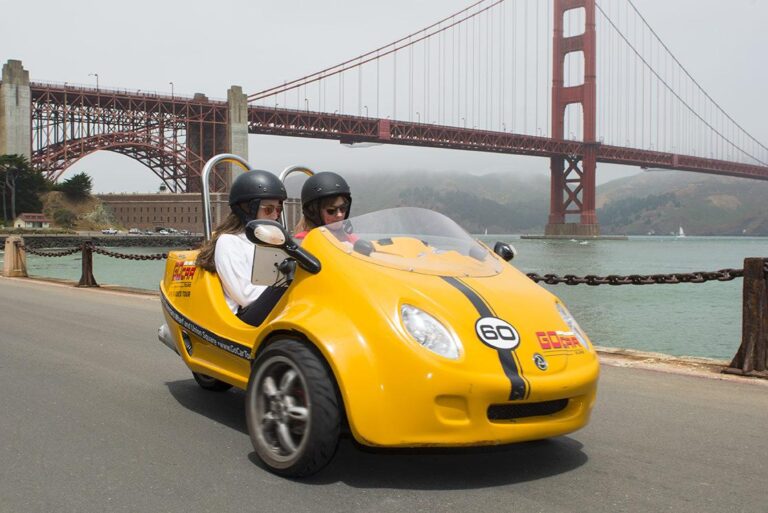How San Francisco’s Urban Dynamics Have Transformed BMW Group’s Car-Sharing Innovations
Adapting to San Francisco’s Complex Urban Fabric: BMW’s Shift in Car-Sharing Philosophy
San Francisco’s intricate cityscape—with its high population density, diverse communities, and extensive public transit network—has been instrumental in reshaping BMW Group’s car-sharing model. Confronted with limited parking and fluctuating demand, BMW moved away from traditional vehicle ownership concepts, instead emphasizing adaptable, user-friendly mobility solutions tailored for urban residents who prioritize convenience and sustainability over possession.
BMW’s strategic pivots include:
- Deployment of intuitive mobile applications designed for quick, short-term vehicle rentals.
- Introduction of compact electric cars optimized for navigating tight city streets and scarce parking spots.
- Establishment of car-sharing stations strategically located near transit hubs and bustling neighborhoods.
| Urban Challenge | BMW’s Strategic Solution |
|---|---|
| Scarcity of parking spaces | Creation of micro-hubs adjacent to public transit nodes |
| Fluctuating user demand | Real-time fleet adjustment and vehicle redistribution |
| Environmental sustainability concerns | Commitment to electrifying the car-sharing fleet |
Understanding User Preferences: Tailoring Services to San Francisco’s Mobility Culture
Insights from San Francisco’s tech-savvy and environmentally conscious population revealed a clear preference for flexibility and ease of use over traditional car ownership. BMW’s analysis highlighted the critical role of seamless digital integration, with users expecting straightforward app interfaces that streamline vehicle access and payment. Additionally, the rising demand for electric and hybrid vehicles within the shared fleet reflects growing environmental awareness among urban commuters.
BMW responded by enhancing its offerings with features such as:
- Instant vehicle access without mandatory reservations, supporting spontaneous travel needs.
- Flexible pricing structures accommodating diverse usage patterns, including hourly and daily options.
- Integration with alternative transport modes like e-bikes and scooters to facilitate last-mile connectivity.
- Strategic vehicle placement aligned with high-traffic corridors and transit centers.
| User Behavior | BMW’s Adaptation | Resulting Impact |
|---|---|---|
| Preference for electric vehicles | Expanded electric vehicle fleet | Lowered emissions and increased appeal |
| Demand for user-friendly apps | Redesigned app interface for faster bookings | Boosted user engagement and loyalty |
| Need for spontaneous trips | Enabled immediate vehicle access | Higher utilization during peak periods |
Innovative Technologies Born from San Francisco’s Mobility Challenges
San Francisco’s notorious congestion and parking constraints have driven BMW Group to pioneer advanced mobility technologies that transcend traditional car manufacturing. Leveraging the city’s smart infrastructure, BMW integrated real-time analytics, adaptive routing, and frictionless payment systems to create a car-sharing experience that is both efficient and user-centric.
Key technological advancements include:
- Real-time fleet optimization: AI algorithms dynamically allocate vehicles to high-demand areas, reducing wait times and idle cars.
- Multimodal transport integration: Synchronization with public transit schedules encourages greener, more efficient trip planning.
- Enhanced user engagement: Personalized alerts and rewards incentivize shared rides, decreasing individual car dependency.
| Technology | Benefit | Outcome |
|---|---|---|
| AI-driven demand forecasting | Pre-positioning vehicles near demand hotspots | 30% reduction in customer wait times |
| Contactless unlocking and payment | Simplified user experience | 40% increase in user retention |
| Carbon footprint monitoring | Encourages eco-conscious choices | 15% rise in sustainable ride usage |
Scaling Car-Sharing: Lessons from San Francisco for Global Expansion
The experience in San Francisco underscores the importance of customizing car-sharing services to local urban conditions and consumer behaviors. Flexibility in fleet composition—ranging from compact electric vehicles to luxury models—combined with integration into existing public transit networks, has proven essential for increasing adoption. Collaborations with city authorities to secure dedicated parking and charging infrastructure further enhance service viability.
Recommendations for entering new markets include:
- Fleet customization: Analyze neighborhood demographics to tailor vehicle types and availability.
- Dynamic pricing: Implement demand-responsive fees to balance usage and encourage off-peak travel.
- Community partnerships: Engage local governments and organizations to build trust and visibility.
- Infrastructure cooperation: Work with urban planners to establish dedicated parking and EV charging stations.
| Strategy | San Francisco Insight | Expansion Advice |
|---|---|---|
| Fleet Variety | Compact EVs favored downtown | Conduct local preference studies before launch |
| Transit Connectivity | Strong transit links boosted usage | Coordinate with public transit routes |
| Pricing Approach | Surge pricing discouraged some users | Adopt transparent, flexible pricing models |
Final Thoughts: San Francisco’s Role in Shaping BMW’s Future Mobility Vision
BMW Group’s ongoing commitment to innovation in urban mobility is deeply informed by its experiences in San Francisco. The city’s tech-forward population, dense infrastructure, and shifting attitudes toward car ownership have driven BMW to develop sustainable, adaptable transportation solutions. These lessons are poised to influence BMW’s global strategies, highlighting the critical need to tailor mobility services to the unique characteristics of each urban market in the quest to redefine the future of transportation.




